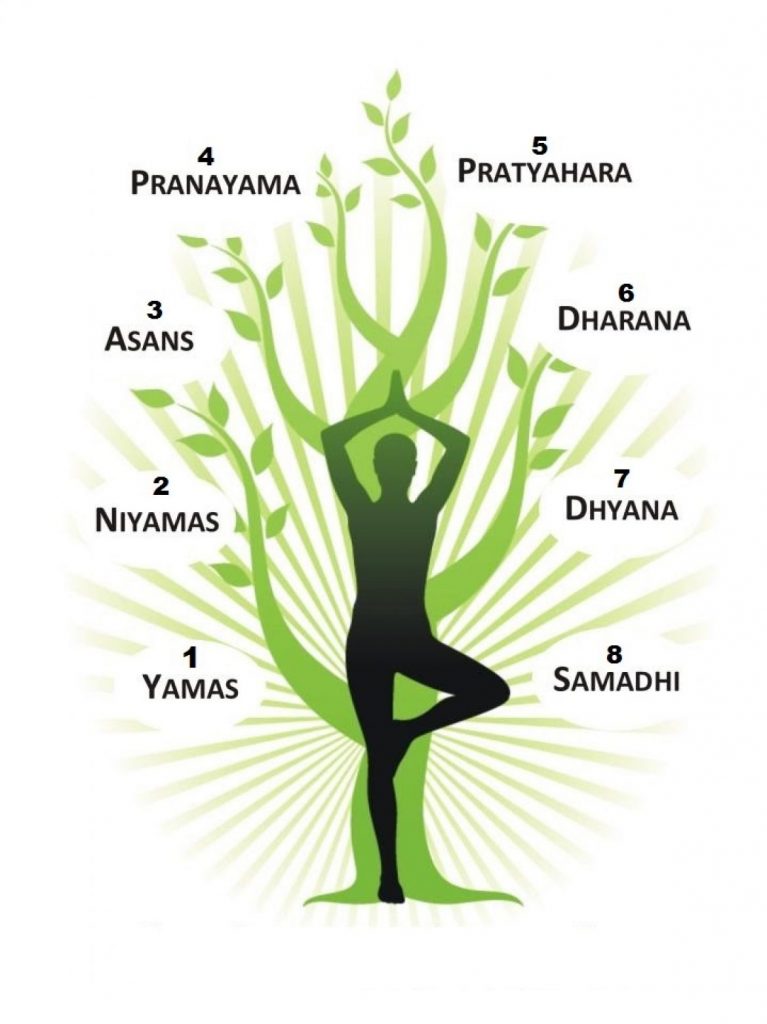
Patanjali's eight limbs of yoga... Yamas, Niyamas, asana, pranayama... Yoga history, Yoga
The yamas and the niyamas are the first two limbs (parts) of the eightfold system for spiritual practice, as outlined by Patanjali in the Yoga Sutra.. The first limb is composed of five external observances (yamas), which can be seen as guidelines for navigating one's worldly conduct. The second limb lists five internal observances (niyamas), which are guidelines for navigating the.

What are Yamas, Niyamas and Ashtanga Yoga of Patanjali Yoganama
The Yamas and Niyamas are the first two steps towards achieving that. The Yoga Sutras contain 196 verses, separated into 4 sections and compiled by the Indian sage Patanjali. Within these verses, the Eight Limbs of Yoga are presented as a model of practice for experiencing this state of union.

niyama of patanjali Life Style Yoga World
The yamas and niyamas are yoga's ethical guidelines laid out in the first two limbs of Patanjali's eightfold path. They're like a map written to guide you on your life's journey. Simply put, the yamas are things not to do, or restraints, while the niyamas are things to do, or observances. Together, they form a moral code of conduct.
Yama and Niyama THE HINDU PORTAL Spiritual heritage Rituals and Practices
What are the five yamas & niyamas? The five yamas (social ethics) and five niyamas (personal observances) are two of these eight limbs.

Namaste Yogi's, here are Yoga's ethical guide to living The Yamas and Niyamas. They are the
What are the five Yamas and Niyamas? The five Yamas (social ethics) and five Niyamas (personal observances) are two of these eight limbs.

The Eight Limbs of Yoga towards Enlightenment MAYI Yoga Academy
Yamas and Niyamas, rungs #1 and #2 ( Previous Next Main) Yamas: The first of the eight rungs ( 2.29) of Yoga is the five Yamas ( 2.30 ), which have to do with training your actions, speech, and thoughts in relation to the external world, particularly with other people. They include: Non-harming ( 2.35 ), Truthfulness ( 2.36 ),

What are Yamas & Niyamas of Patanjali Yamas and niyamas, Eight limbs of yoga, Yoga lifestyle
The foundation limbs of Patanjali's eight-fold path of yoga, Yama and Niyama, create a solid foundation and strong container for the yogini to move into the deeper stages of yoga with focus, inner-strength, and success. Simply by reading and contemplating the Niyamas, we begin to practice them.

Yoga Sutras Of Patanjali The 8 Limbs Of Yoga Explained Liforme
1. Ahimsa (Non-Violence) This principle emphasizes the importance of refraining from causing harm, injury, or violence to any living being, including oneself. It encourages the practice of compassion, kindness, and empathy towards all creatures. 2. Satya (Truthfulness) Satya encourages individuals to always speak and embody truth.

How To Make the Yamas and Niyamas Work for You in the Modern World Patanjali yoga, Yoga sutras
The Yamas and Niyamas are the first two limbs of the path to enlightenment, and they are sometimes referred to as "moral codes" or "right living" practices.. Because Patanjali does not identify Īśvara as a specific form of God, it may be understood in a manner that is applicable to diverse spiritual traditions in yoga practice. All that is.

Patanjali's Teachings The Yamas, or The Laws of Life Intuitive and Spiritual
Patanjali's Yoga Sutras and the Yamas and Niyamas are rich philosophical subjects that can be explored and practiced in great depth. If you are ready to study and dive deeper into these practices, consider reading one or more dedicated books on the subject.. Very good descriptions of the five aspects of Yama from Patanjali's Yoga Sutra.

What are the Five Yamas of Ashtanga Yoga of Patanjali
This spirit of true renunciation will diminish the power of aparigraha. In verse 30 of Chapter 2 of the Yoga Sutra, Patanjali calls the yamas "the great vow," to be practiced at all times. This is a difficult assignment, but if we follow this vow, the power released in our lives and the lives of others will be stunning.

yamas and niyamas Google Search Ashtanga Yoga, Yoga Sutras, Yoga Sequences, Vinyasa Yoga
Explore the Yamas and Niyamas - the first two limbs of the Eight Limbs of Yoga (as described by Patanjali in the Yoga Sutras). They can be seen as guidelines for positive behaviour. Develop a fuller understanding of the first two limbs of yoga through the physical practice of poses and gain a deeper understanding and experience of what you are practising.

The Yamas and Niyamas of Patanjali’s Yoga 58 Dharma Art Wisdom Charts
1. Yama. The first of the 8 limbs of yoga, yama, deals with one's ethical standards and sense of integrity, focusing on our behavior and how we conduct ourselves in life. Yamas are universal practices that relate best to what we know as the Golden Rule, "Do unto others as you would have them do unto you.".

Exploring the Eight Limb Path The Niyamas Yoga sutras, Ashtanga yoga, Eight limbs of yoga
The five yamas are ahimsa (non-violence), satya (truthfulness), asteya (non-stealing), brahmacharya (abstinence) and aparigraha (non-grasping). Each one is vital to spiritual growth and development. Explore all five and discover how each one can inform and enrich your yoga practice. Source: kazuend/unsplash.com

Les Yoga Sutra de Patanjali Nathalie Wheatley
The yamas are five ethical restraints and the niyamas are five ethical observances that are laid out in Patanjali's Yoga Sutras. . The Yoga Sutras is a sacred text in yogic philosophy that was compiled by the scholar Patanjali. The collection of 196 succinct aphorisms seeks to explain the teachings of the Classical School of Yoga.

Yama and Niyama यम और नियम Patanjali Yoga sutra YouTube
Yamas & Niyamas are the first two limbs of the 8 limbs discussed by Sage Patanjali. Yamas (restraints) & Niyamas (observances) are the moral rules that set a person firmly on the spiritual path, these steady the boat for further journey into deep waters. Vedas & Upanishads which were written earlier also discuss various Yamas & niyamas.